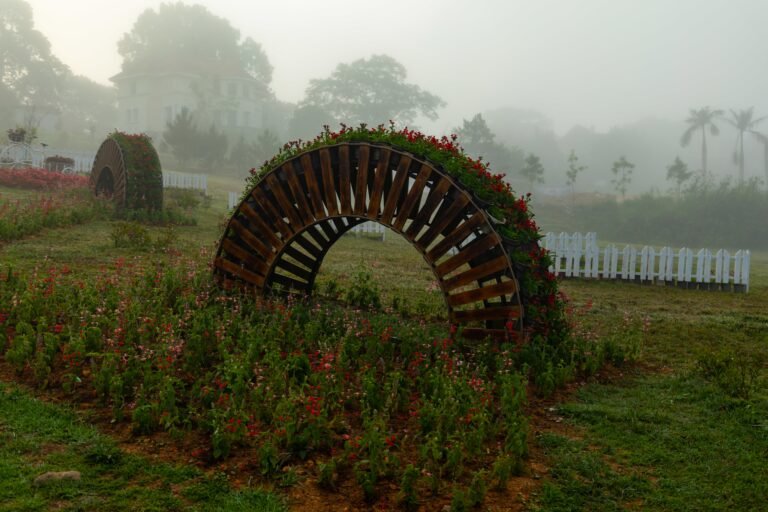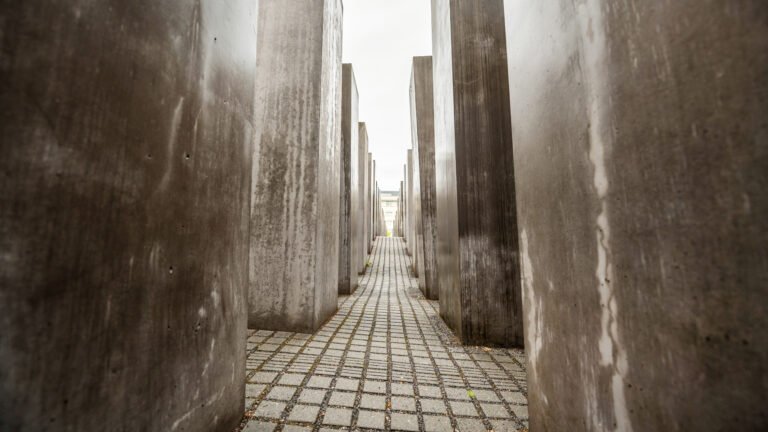Architecture has long been about balancing aesthetics, functionality, and structural integrity. But some architects decide to break free from tradition and embrace the unconventional, resulting in creations that not only challenge our expectations but also capture the imagination. These buildings are not just places to live or work; they are landmarks in their own right, with unique designs that stir curiosity and inspire wonder.
Here’s a look at ten of the most unusual and fascinating buildings from around the world that have redefined the very essence of architecture.
1. Crooked House, Sopot, Poland
Nicknamed “Krzywy Domek,” the Crooked House in Sopot, Poland, looks like something straight out of a fairy tale. Designed by Szotyńscy & Zaleski and completed in 2004, the building features curving walls, slanted windows, and distorted rooflines, giving it the appearance of a building that’s melting or dancing. Despite its bizarre form, the building is structurally sound, made from steel and concrete. The Crooked House houses cafes, shops, and restaurants, making it a functional and whimsical space.
2. The Big Basket, Newark, Ohio, USA
In Newark, Ohio, the Longaberger Big Basket takes branding to a whole new level. This seven-story building, completed in 1997, is designed to look exactly like the company’s iconic woven basket, complete with handles. Measuring 160 feet in length and 90 feet in width, it became the headquarters of the Longaberger Company. Inside, you’ll find a massive basket atrium and even a 30-foot wooden basket replica. Though the company faced financial difficulties, the Big Basket remains an unforgettable example of novelty architecture.
3. Stone House, Fafe, Portugal
The Stone House, or Casa do Penedo, is a masterful blend of nature and architecture. Built into a mountainous landscape in 1974, this house uses four massive boulders as its structural walls, blending seamlessly with the surrounding environment. Designed by Eduardo Souto de Moura, the Stone House is rustic and raw, offering a unique minimalist appeal. Without modern utilities and with minimal environmental impact, it serves as an incredible example of harmony between design and nature.
4. Huainan Piano Building, China
Shaped like a giant piano and violin, the Huainan Piano Building in China is a tribute to musical artistry. Completed in 2007, the building houses concert halls in the piano section, while the violin part is used for escalators and stairs. Known as the “Most Romantic Building in China,” this structure attracts both music lovers and couples for weddings. Serving as both an educational hub and a cultural landmark, it celebrates the region’s deep connection to music.
5. Dancing House, Prague, Czech Republic
The Dancing House, also known as Tancici Dum, is one of Prague’s most recognizable structures. Designed by architects Frank Gehry and Vlado Milunić in 1996, it stands in stark contrast to the city’s traditional architecture. The building features a glass tower that appears to lean on a stone base, mimicking the movement of a dancing couple. Though it was controversial during its construction, the Dancing House is now an iconic part of Prague’s skyline and houses offices, a restaurant, and a rooftop viewing platform.
6. Upside-Down House, Szymbark, Poland
The Upside-Down House, built by Daniel Czapiewski in 2007, flips the conventional idea of architecture on its head—literally. The roof is at ground level, while the floors are placed on top, making this house a visual and cognitive puzzle. Inside, everything is reversed, from the furniture to the décor, giving visitors an experience that challenges the way we perceive space. This unique structure, which is not meant for residential use, symbolizes the imbalance in modern society.
7. Cube Houses, Rotterdam, Netherlands
The Cube Houses, or Kubuswoningen, are an architectural marvel in Rotterdam. Designed by Piet Blom in 1977, these tilted cubes stand at a 45-degree angle, creating a striking geometric effect. Blom’s design concept was to mimic trees, with each cube representing a tree in a forest. While the unusual design presents challenges for interior furnishings, the concept promotes communal living in a compact urban environment and has become a source of inspiration for forward-thinking urban planners.
8. Container City, London, UK
Container City is a shining example of sustainable design, built from recycled shipping containers. Initiated by Urban Space Management in 2001, this development serves as homes, offices, and classrooms. The modular containers are eco-friendly, customizable, and cost-effective, providing a practical solution to housing shortages and urban sprawl. Its success is a testament to the possibilities of repurposing materials and promoting green living in urban areas.
9. The Bubble Palace, Théoule-sur-Mer, France
The Bubble Palace, or Palais Bulles, is a futuristic architectural wonder overlooking the Mediterranean in Théoule-sur-Mer, France. Designed by Antti Lovag and built for industrialist Pierre Bernard in 1989, the palace consists of a network of interconnected domes. Later owned by fashion designer Pierre Cardin, the Bubble Palace includes 29 rooms, 11 bathrooms, and multiple pools, all designed with fluid, round forms. It is a true celebration of free-flowing, organic architecture.
10. The Chords Bridge, Jerusalem, Israel
Designed by Santiago Calatrava, the Chords Bridge in Jerusalem is a striking piece of architecture that resembles a harp reaching skyward. Built in 2008, the bridge serves both pedestrians and light rail traffic. Its elegant design, with a network of cables supporting the curved structure, symbolizes harmony and unity. The Chords Bridge has become a visual centerpiece in Jerusalem, seamlessly blending modern architectural elegance with the city’s rich cultural and historical layers.
These ten unusual buildings are proof that architecture doesn’t have to follow traditional rules. By breaking the boundaries of design and functionality, these structures have become more than just places to live and work; they are works of art, cultural symbols, and statements of creativity. From upside-down houses to massive basket-shaped buildings, each of these landmarks challenges our perceptions and inspires us to think outside the architectural box.




